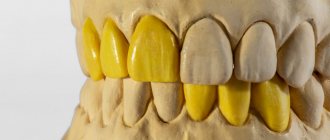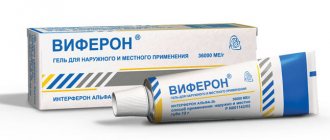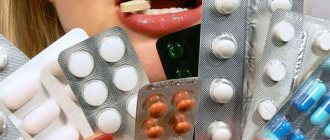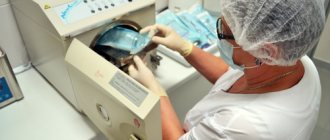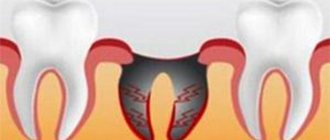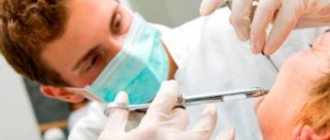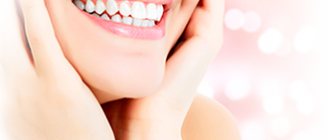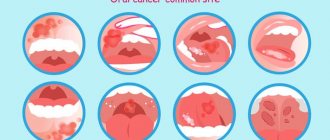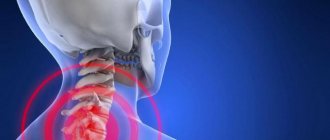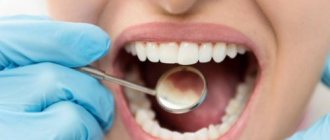What is Lincomycin?
Lincomycin in ampoules
Quite often, when the gums are damaged, pus begins to accumulate in the oral cavity or inflammation occurs. These situations necessarily require the use of drugs from the group of antibiotics.
In dentistry, the most advantageous remedy is Lincomycin, which, thanks to its composition, helps to quickly eliminate inflammation and suppress bacterial proliferation , since protein compounds simply do not reproduce.
This allows the drug to have a wide spectrum of action in the dental field. The ability to vary Lincomycin helps to cope with various aspects of the disease.
Composition of the drug
The main active substance in the drug is lincomycin hydrochloride. Since dentists primarily use capsules, sodium hydroxide and disodium edetate are added to create a normal injection solution.
There is no optimal content of it in one capsule, so the concentration and the composition itself may vary slightly depending on the manufacturer. There are also Lincomycin tablets and ointments, each of which has its own range of uses. The most common additional substances are calcium stearate, aerosil and microcrystalline cellulose.
Pharmacology
Lincomycin ointment
The drug Lincomycin, as an antibiotic, relies on its effect on the suppression of microbes and the antibacterial effect. By varying the dose of the drug, the dentist can solve the following problems in the inflamed oral cavity:
- a small or medium amount of Lincomycin does not destroy the infection, but only stops the ability of bacteria to reproduce. Inflammations become static and do not spread further;
- a high concentration of the administered drug destroys bacteria and emerging pathogenic flora.
Dental inflammation is caused by gram-positive microbes - these include streptococci, aerobic cocci and anaerobic bacteria. After using Lincomycin, the peptide bonds are broken, so all microorganisms become neutralized for quite a long time.
Bacteria have not yet acquired the ability to quickly get used to the action of Lincomycin. The drug acts as an effective preventative against the development of caries with constant rinsing.
The drug is quickly absorbed from the fatty acids and 50% of the received dose enters the bloodstream, combining with plasma proteins. The best effect occurs 3 hours after taking the drug, gradually being excreted unchanged through feces and urinary secretions.
Indications for use
Lincomycin capsules
Lincomycin has firmly taken its place in dentistry, helping doctors cope with many diseases. It is used in cases:
- periodontitis, periodontitis and gingivitis;
- open suppuration in the mouth, fistulas and abscesses;
- the presence of infectious inflammation on the teeth;
- prophylactic supplement after treatment;
- caries, extraction and implantation of teeth.
In some cases, it is an effective remedy to help cope with severe toothache.
Independent use of the drug is not permitted; it is prescribed and used exclusively by a doctor for therapeutic purposes.
Release form and method of application
Now the pharmaceutical market offers a wide range of forms of Lincomycin to choose from. The dentist independently chooses the most optimal format based on the required purposes, since the reason for their use differs.
Instructions for use in the table:
| Form of the drug | Method of use | Optimal dosage | Treatment time limit (how long can be applied) | Reason for use |
| Capsules | Take 2 hours before meals, without chewing, but with water. | From 4 to 6 tablets per day. For children, calculated based on weight | From 7 to 21 days | To remove toothache and inflammation |
| Ampoules | Injections are administered: intramuscularly or intravenously | Adults: Intramuscularly – 2 times a day, 600 mg; Intravenously - 600 mg, diluted in 250 ml of glucose solution. For children, the composition is calculated at the rate of 10 mg per 1 kg of weight | Injections should be given every 8-12 hours for up to 7 days | In the presence of severe inflammation and destruction in bone tissue |
| Ointment | Take a cotton swab, apply Lincomycin to it, and apply it as a compress. Apply with your finger to inflamed gums. Rinse your mouth before use | A small layer 3 times a day | Up to 2 weeks | Treatment of gums, freezing of viruses and infections |
| Patch | It has 2 sides - hydrophilic and hydrophobic (one protects the tooth from foreign substances, the second holds the medicine). The required piece is cut out of the patch, from which the outer layer is removed, it is applied to the damaged area for 6-8 hours | Patch size according to the volume of the damaged area | 7-14 days of use | For orthopedics and dental surgery |
The drug has a peculiarity - the percentage of absorbed substance depends entirely on the food eaten beforehand . It is advisable to use it only on an empty stomach, then the concentration of the substance reaches a third of the administered dose, after eating the indicator drops significantly and has no effect.
During the entire treatment process, even healthy people should not drink alcohol; the result will be terrible.
In general, it is intended for fairly rapid healing of small wounds left after tooth extraction and the destruction of inflammation.
Content:
- The use of antibiotics during tooth extraction for preventive purposes
- Antibiotics after tooth extraction with inflamed gums
- When you can't do without antibiotics
- Types of antibiotics used in dentistry
- What are the consequences of not taking antibiotics?
Only the dentist can decide whether to prescribe an antibacterial drug to a patient or not.
The need for its use does not always arise. If the operation was uncomplicated and the likelihood of complications is minimal, additional drug therapy is usually not required. Even if after tearing out a unit the body temperature has increased, this is not an indication for antibiotic therapy. The body adequately responds to the inflammatory process and does everything necessary to block the spread of pathogenic microflora. Normally, already on the 3-4th day the patient’s condition is completely normalized, the pain goes away, the swelling subsides.
Side effects
Lincomycin patch
The action of Lincomycin additionally destroys not only harmful, but also beneficial bacteria, so many side effects occur, especially in the gastrointestinal tract. The most common ones include:
- pain and discomfort in the stomach;
- severe nausea and vomiting;
- constipation;
- headache and dizziness;
- muscle weakness, increased liver fermentation;
- manifestations of an allergic reaction up to anaphylaxis.
Dentists often notice that after injections of Lincomycin, the cheeks become very swollen for a while, the tongue and gum tissue hurt. However, this effect is often attributed to the consequences of treatment.
Are there any contraindications?
When prescribing antibacterial drugs after removing the figure eight, the doctor must take into account the characteristics of the patient’s body and diseases, if any. The dentist must know about the presence of problems with the gastrointestinal tract (GIT) or other body systems, because the choice of certain medications will depend on this.
Extracted wisdom tooth
Patients suffering from gastrointestinal diseases need to take antibiotics in the form of solutions or in effervescent form. This will significantly speed up the process of absorption of the active components of the antibiotic, due to which the contact of the surrounding flora with the active substances will be as short as possible. In addition, to avoid unpleasant consequences, doctors often prescribe antibacterial drugs to their patients along with gastroprotectors (special substances that protect the mucous membrane of the human stomach).
Antibiotics after tooth extraction
In rare cases, antibiotics can be prescribed intramuscularly, but this also happens if there are problems with the gastrointestinal tract. The form of the drug, dosage and duration of the treatment course, of course, should be determined by the doctor after examination. Self-medication is highly discouraged, because the incorrect use of potent drugs will not only not help speed up the recovery process, but will also provoke other health problems.
Drugs similar to Lincomycin used in dentistry
If it is impossible to use Lincomycin, you can use an analogue. These drugs are highly effective and have similar effects.
What to replace:
- Ecolinkom is an antibiotic lincosamide. Helps cope with osteomyelitis, infectious inflammation and sepsis. Price – 260 rubles .
- Lincocin belongs to the same group. Helps drive the infection into a static state. Price – 150 rubles .
Combination of Lidocaine and Lincomycin
In case of severe inflammation accompanied by intense toothache, the doctor may, in addition to Lincomycin, prescribe a strong painkiller - Lidocaine. You should not make such a mixture yourself , since the effect is very strong.
However, when combined, they create the best remedy for any pain in the oral area. Mainly used for the treatment of periodontitis, creating a mixture consisting of 1 ml of lincomycin and 0.2 ml of lidocaine. The mixture is injected into the oral cavity once a day, 0.6 ml for 10 days.
Antibiotics after tooth extraction with inflamed gums
A few days after the extraction, the patient visits the dentist who performs the operation. The doctor assesses the course of regenerative processes. If it turns out that the inflammatory process has spread and there is a high probability of a bacterial infection, then antibiotics are immediately prescribed. They create conditions for the speedy restoration of damaged mucous membranes.
The most common reasons why antibiotic therapy is necessary after removal of radical units:
- non-compliance with medical prescriptions, due to which the hole became inflamed;
- too active rinsing of the mouth, which caused the displacement of the protective blood clot;
- slow healing associated with the individual characteristics of the human body.
After studying the specifics of the situation, the doctor decides which medications to prescribe. In some cases, it is possible to get by with local application of antibacterial gels and ointments. For severe inflammation, oral medications are prescribed.

